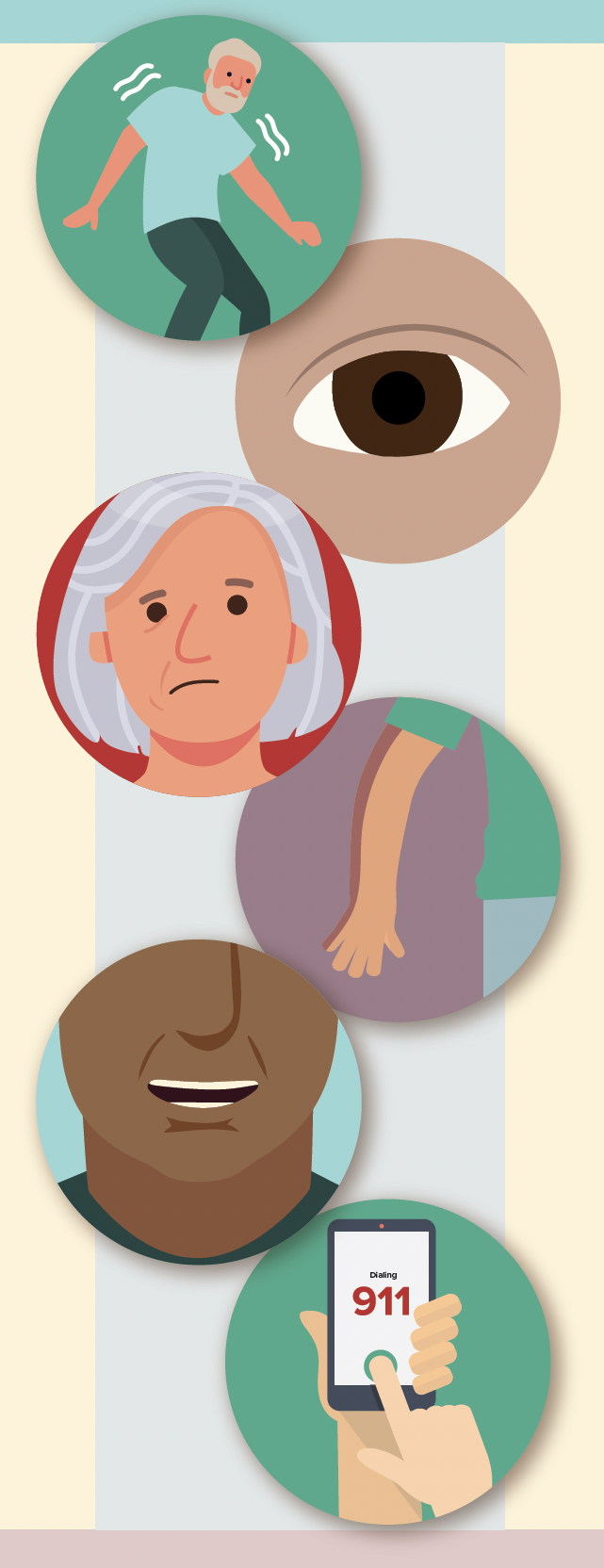It's a New Day in Public Health.
The Florida Department of Health works to protect, promote, and improve the health of all people in Florida through integrated state, county, and community efforts.
Understanding Stroke
Contact the Bureau of Chronic Disease Prevention
A stroke occurs when a blood vessel that carries oxygen and nutrients to the brain is either blocked by a clot (ischemic stroke) or bursts (hemorrhagic stroke). When that happens, part of the brain cannot get the blood (and oxygen) it needs and this can lead to damage to the affected area of the brain, or even death. Stroke can also cause disability and reduce mobility.
Every year, more than 795,000 people in the United States have a stroke, and 1 in 6 deaths (17.5%) from cardiovascular disease was due to stroke. The geographic areas with the highest death rates due to stroke are in the southeastern United States.
Symptoms
 One of the best things you can do is to remember the signs and CALL 911, even if you are not sure.
One of the best things you can do is to remember the signs and CALL 911, even if you are not sure.
By knowing the signs and symptoms of stroke, you can take quick action and save a life, maybe even your own.
Risk Factors
Anyone can have a stroke, but certain behaviors, family history, and medical conditions can increase your chances. Some risk factors you cannot change, include age, sex, race or ethnicity, your genetics, and family history.
There are other risk factors you can change through modifying your lifestyle and working with your health care team.
Risk factors for stroke include:
- High blood pressure
- Excessive alcohol use
- Physical inactivity
- Diabetes
- High cholesterol
- Smoking
- Heart disease
Prevention
To lower your risk of stroke, consider these lifestyle changes. Your health care provider can also provide specific guidance based on your individual needs.
- Maintain a healthy weight through a diet rich in vegetables, fruit, whole grains
- Be physically active
- Limit or avoid alcohol consumption
- Don’t smoke or if you do, quit
- Maintain healthy cholesterol, blood pressure, and blood sugar levels



Connect with DOH